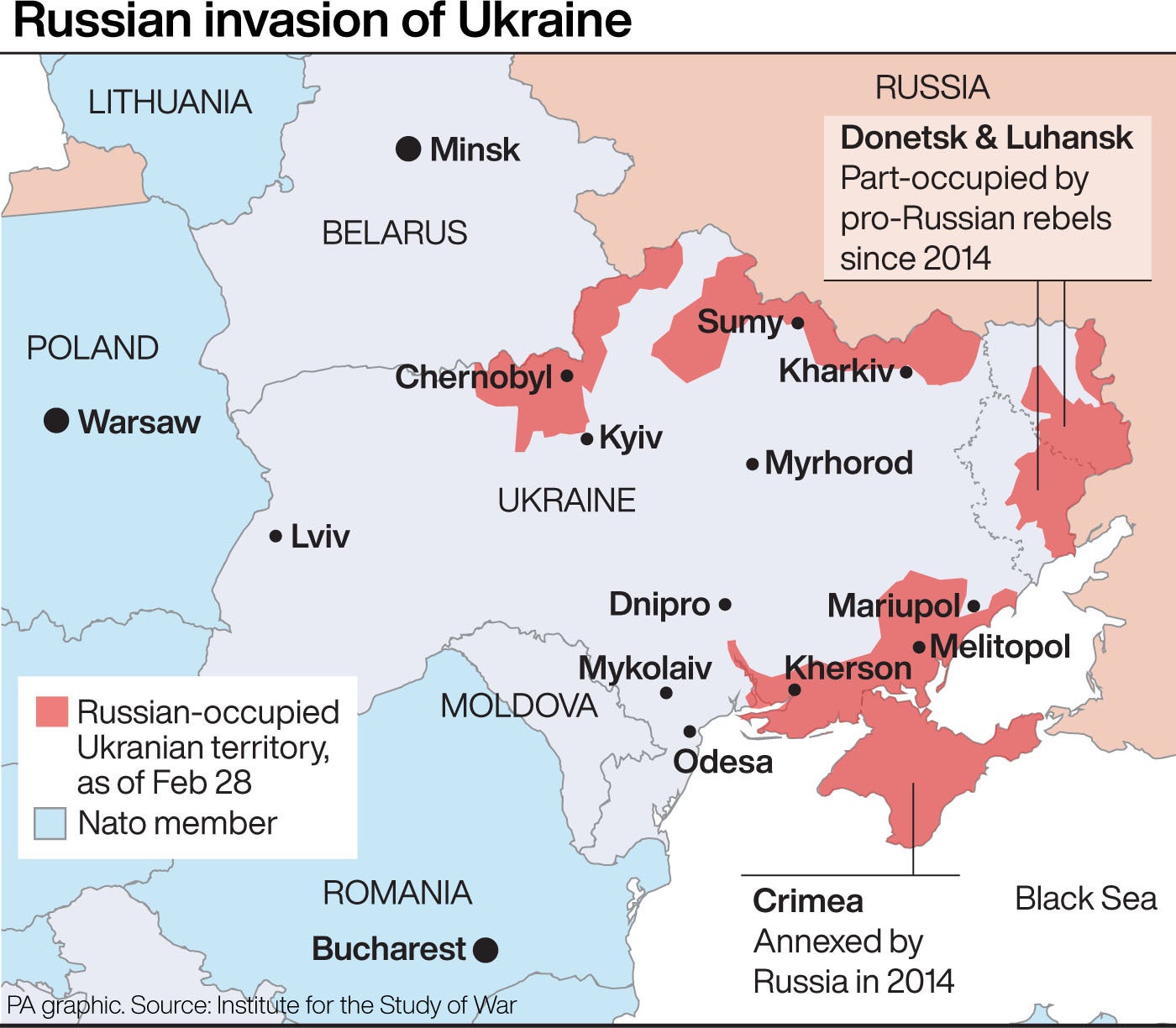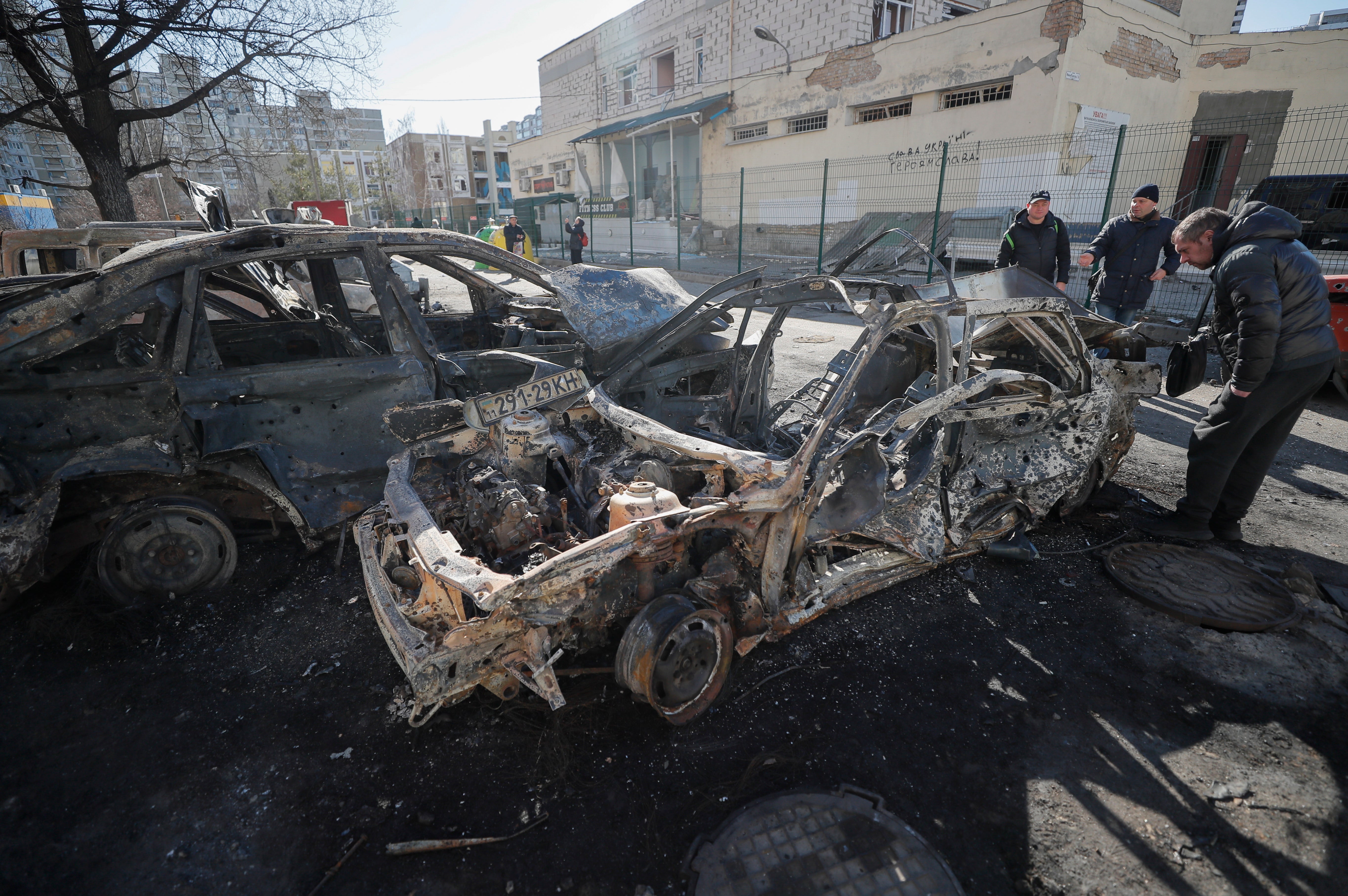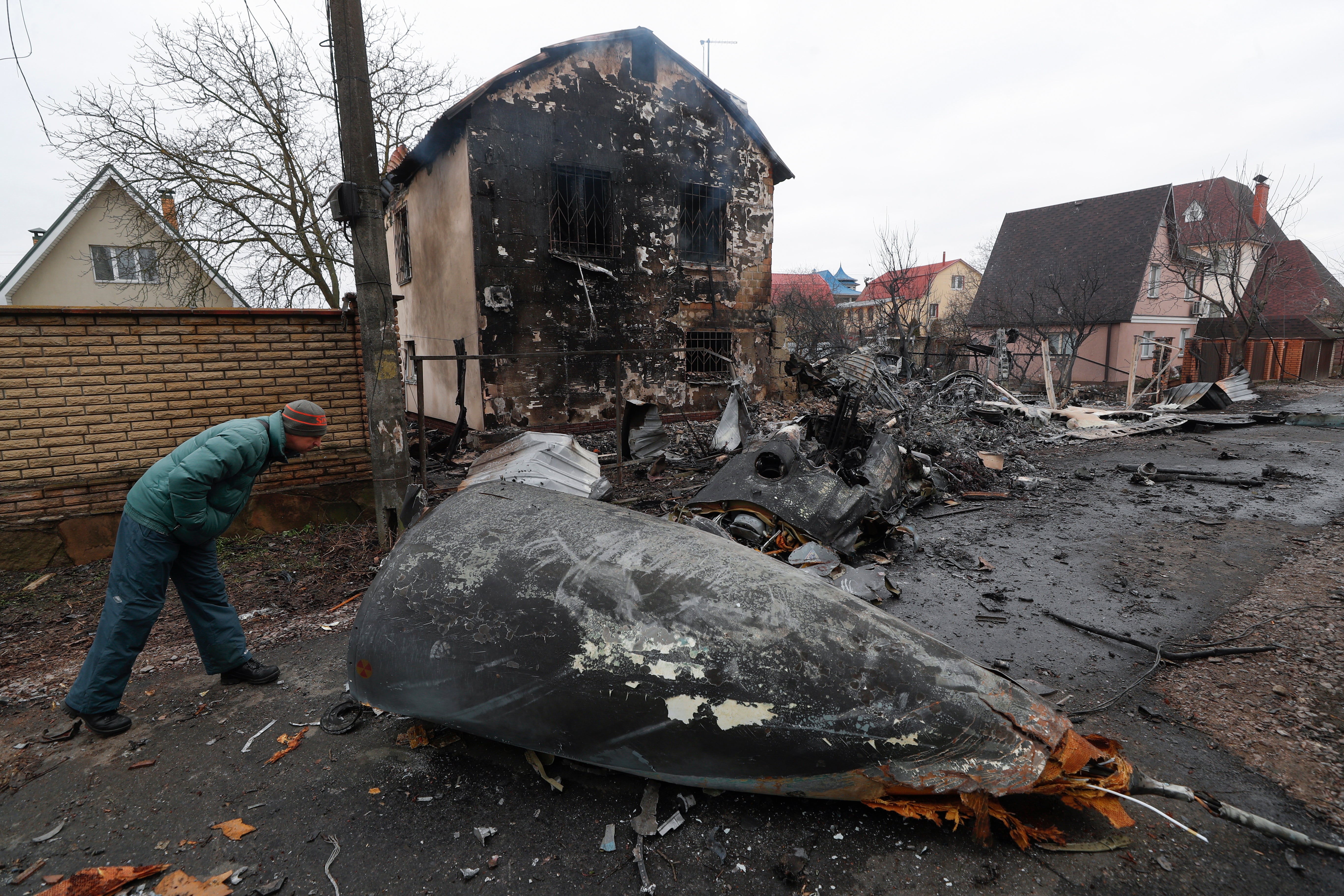What weapons does Russia have? Deadly arms Putin uses in Ukraine from phosphorus bombs to hypersonic missiles
Thermobaric rocket launchers have been seen moving towards Kyiv
Your support helps us to tell the story
From reproductive rights to climate change to Big Tech, The Independent is on the ground when the story is developing. Whether it's investigating the financials of Elon Musk's pro-Trump PAC or producing our latest documentary, 'The A Word', which shines a light on the American women fighting for reproductive rights, we know how important it is to parse out the facts from the messaging.
At such a critical moment in US history, we need reporters on the ground. Your donation allows us to keep sending journalists to speak to both sides of the story.
The Independent is trusted by Americans across the entire political spectrum. And unlike many other quality news outlets, we choose not to lock Americans out of our reporting and analysis with paywalls. We believe quality journalism should be available to everyone, paid for by those who can afford it.
Your support makes all the difference.Russian forces have been attempting to storm Kyiv and several other major cities in Ukraine as part of an offensive taking place “in all directions”.
Western analysts said that the Russian army was experiencing unexpected difficulties, with the Ministry of Defence claiming the invasion was being “frustrated” by strong resistance from Ukranians.
But Vladimir Putin has demonstrated that he was prepared to escalate his use of deadly force, with reports of cluster bombs in the city of Kharkiv.
Russia is widely believed to have the largest nuclear arsenal in the world but the country has many other devastating weapons it can deploy, some of which it appears to have used already.
Below we look at the weapons at Putin’s disposal, as the war in Ukraine continues.
Follow the latest on the Ukraine-Russia war here

Hypersonic missiles
Russia said on Saturday it had used hypersonic Kinzhal (Dagger) missiles to destroy a large weapons depot in Ukraine’s western Ivano-Frankivsk region.
Russia’s Interfax news agency said it was the first time Russia had deployed the Kinzhal system since it sent its troops into Ukraine.
Moscow prides itself on its advanced weaponry, and Mr Putin said in December that Russia was the global leader in hypersonic missiles, whose speed, manoeuvrability and altitude make them difficult to track and intercept.
The Russian military has said it will keep using state-of-the-art Kinzhal missiles.
President Joe Biden said Russia used the hypersonic missile to destroy a weapons depot on Saturday “because it is the only thing they can get through with absolute certainty”.
Phosphorus bombs
Russia has been accused of using phosphorus bombs in its invasion of Ukraine.
White phosphorus munitions were deployed in the eastern city of Kramatorsk on Monday, according to the deputy head of Kyiv’s police.
Oleksiy Biloshytskiy shared a video of material burning fiercely on the ground as it was touched with a spade. The footage has not been independently verified.
White phosphorus, which ignites on contact with air, is often used to mark enemy targets and produce a smokescreen to hide troop movements.
It can also be used to start fires, and can burn through bone when it comes into contact with flesh. It can kill, maim and poison victims.
Thermobaric launchers or ‘vacuum bombs’
Among the weapons which have been seen moving towards the capital are TOS-1 thermobaric launchers; BM-21 122mm Grad; BM-21 220mm Uragan and 300mm Smerch systems.
Thermobaric weapons are considered to be one of the most brutal war weapons that exist.
The missiles are filled with a highly explosive fuel and chemical mix, which on exploding can cause supersonic blast waves that can obliterate everything in their path, including buildings and humans.
They are also known as aerosol bombs or vacuum bombs because they suck in the oxygen from the surrounding air to generate a powerful explosion.

The Ukrainian ambassador to the US said thermobaric launchers had been used during the invasion. Russia has also confirmed that it has used thermobaric weapons in Ukraine, according to the UK’s ministry of defence.
“The Russian MoD has confirmed the use of the TOS-1A weapon system in Ukraine,” the MoD wrote on Twitter. “The TOS-1A uses thermobaric rockets, creating incendiary and blast effects.”
Intelligence officials told The Independent the Russians are also using 27M Malka 203mm heavy self- propelled howitzer and 2S4 Tyulpan 240mm heavy self-propelled mortars, which can be used to large buildings.
Peter Lee, of the University of Portsmouth, explained how these bombs work in gruesome detail in 2016, after Russia allegedly used them in Syria.
“Imagine taking a deep breath then submerging yourself in water,” he wrote. “Then imagine having all of the oxygen forced instantaneously from your body.
“Try to inhale again. But instead of cold water filling your lungs, toxic, flammable particles start killing you from the inside out.”
In 2000, Human Rights Watch condemned Russia’s reported used of the weapons a year earlier in Chechnya as “a dangerous escalation” with “important humanitarian implications”.
Cluster bombs
The Russian military has also been accused of using cluster bombs in an attack that killed a child and two adults hiding in a pre-school in northeastern Ukraine.
Cluster bombs, or cluster munitions release hundreds of smaller munitions or bomblets over a wide area, wreaking catastrophic damage and casualties.
Human Rights Watch said it has also identified examples of cluster munition use.

On Friday, it said a cluster bomb had been used the day before by the Russian military in the town of Vuhledar.
Four civilians were killed in the attack, the organisation said.
Human Rights Watch describes the weapon as posing “an immediate threat to civilians during conflict by randomly scattering submunitions or bomblets over a wide area”.
Bellingcat, a website specialising in investigations and verification, said on Sunday that it had located multiple sites in Ukraine where cluster munitions had been used.
It outlined two, at a pre-school in the city of Okhtyrka, and in Kharkiv, where it had verified social media reports of cluster munition attacks.
More than 100 countries have committed never to use the weapons under the Convention on Cluster Munitions, including the UK, but neither Russia nor Ukraine have signed the agreement.
Amnesty International has condemned Russia’s reported use of cluster munitions in Ukraine, saying an attack on a pre-school “may constitute a war crime”.

Nuclear Weapons
Although Vladimir Putin put Russia’s strategic nuclear deterrent forces on high alert, such extreme measures have not been used so far.
Instead Russia has deployed some “dual-capable” vehicles that could theoretically launch nuclear weapons near Ukraine but there are no signs on the ground the country has actually deployed nuclear weapons or nuclear custodial units, according to the group. And Russia itself has not announced any plans to use nuclear weapons.
Although reports on the number of nuclear weapons in Russia’s arsenal vary, it is believed they have around 6200 warheads.
Of those some 1,588 of which are deployed on ballistic missiles and heavy bomber bases, with another roughly 977 strategic warheads and 1,912 nonstrategic warheads in reserve, according to the Bulletin of the Atomic Scientists.

War planes
Russian military have been using an array of aircraft in its attack on Ukraine. Their planes are capable of firing guided air-to-ground missiles or dropping cluster or fragmentation bombs.
A US defence official has said that early intelligence suggested that Russian military had been using 75 fixed-wing bomber planes to focus on striking the Ukrainian air defences and ammunition stores.
Attack and transport helicopters, including the Mi-8, have also been used in the offensive on the capital Kyiv, the Ukrainian military have said.
They claimed on Saturday that a Russian transport plane carrying soldiers had been shot down.

Join our commenting forum
Join thought-provoking conversations, follow other Independent readers and see their replies
Comments